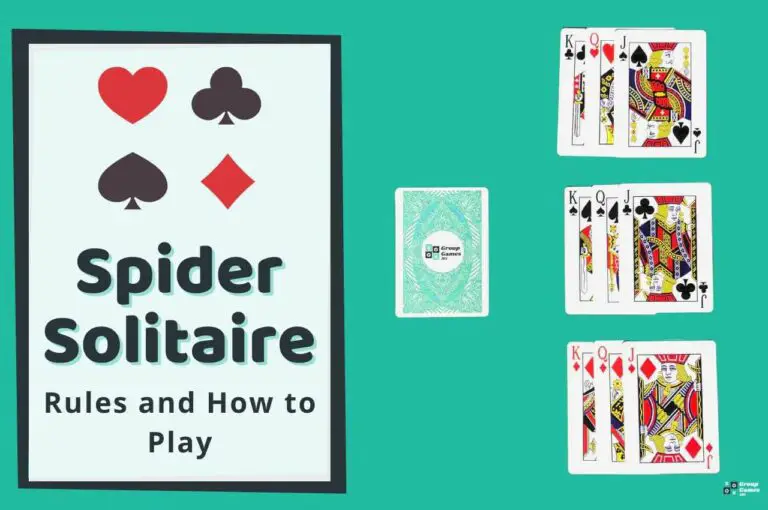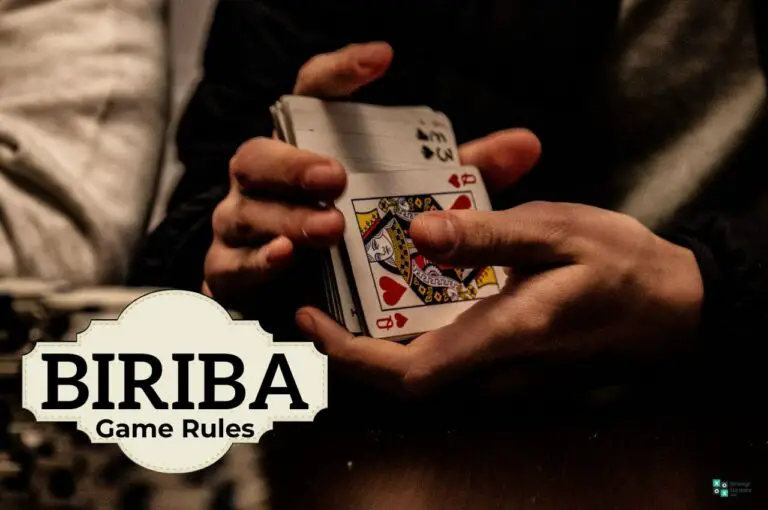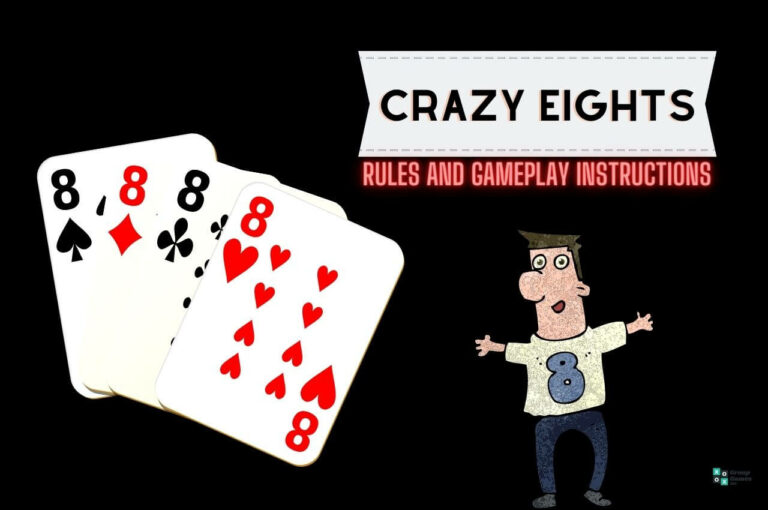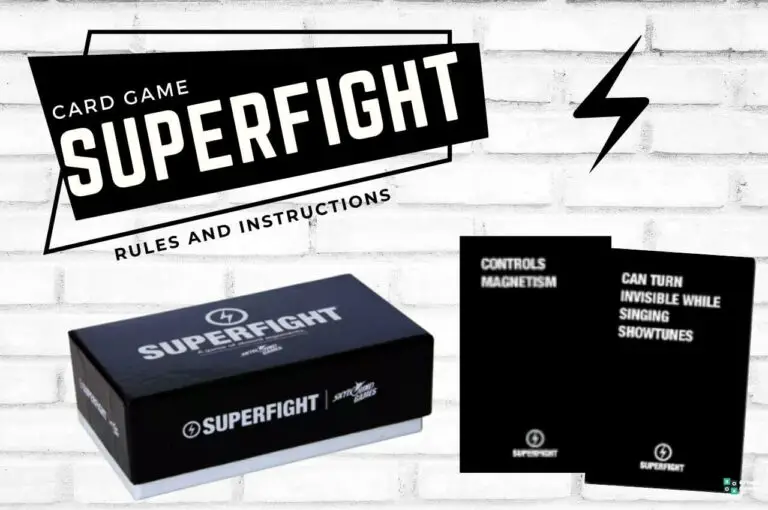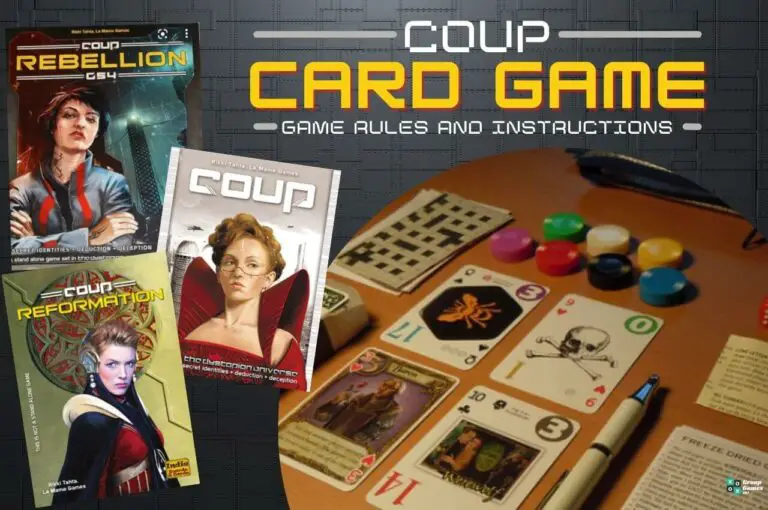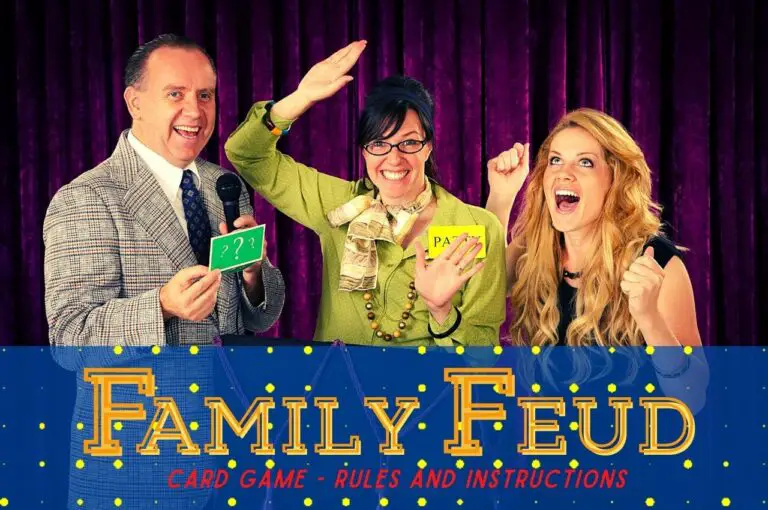The Hanabi rules are simple, work with the other players to play cards in both color and numerical order to win.
Sounds easy, right?
Unfortunately, the twist in Hanabi is that players aren’t allowed to look at their own cards throughout the game.
They, instead, must rely on their teammates giving hints at certain moments to try to figure out what card they have in their hands.
This important rule gives Hanabi a unique challenge unlike any other card game but does also give you and your friends a great test in communication and teamwork skills.
If you’re intrigued by the nature of this game and would love to know more, continue reading to learn exactly how to play Hanabi and how this specific rule works throughout the game.
What Is Hanabi?

Hanabi is Japanese for ‘fire flower,’ otherwise known as a firework which is fitting for a game in which the goal is for players to work together to make sure the firework display is perfect.
The cooperative aspect of the game is very similar to another card game, The Mind (see our guide to The Mind card game rules), where you win and lose as a team.
Number of Players Required: 2-5 players.
Who Can Play It: Recommended for ages 8+.
Difficulty: Medium.
Length of Play: 30 minutes.
Similar to: The Game; Narabi; The Mind
Main Objective: As a group, work together to create the best fireworks display possible by the end of the game and achieve the highest score possible.
Why We Love It: Co-operative games usually are a great way to improve teamwork without the added pressure of having to go against your pals. It’s also fun to see your team potentially improve every time you play too.
Playing Hanabi – What You’ll Need.
Like most card games, you’ll need to make sure you’ve got yourself the official Hanabi game set that includes:
- 50 fireworks cards in red, yellow, green, blue & white
- 10 cards per color (values 1, 1, 1, 2, 2, 3, 3, 4, 4, 5)
- 10 colorful fireworks cards (values 1, 1, 1, 2, 2, 3, 3, 4, 4, 5)
- 9 Note tokens
- 3 Storm tokens
Or you may want to instead purchase the Hanabi Deluxe pack, which follows the same rules as the original but has 6 extra unique tiles added in the game.
How To Set Up Hanabi
This guide is for players who choose to play with the basic rules, but if you’re playing with the advanced rules, then you’ll also use the spare token card and the colorful fireworks card.
Usually, the oldest player gets assigned the role of first player, and that player sets up the game tokens in the play area.
In the basic rules, the 8 note tokens get placed in the play area white-side up, and the 3 storm tokens you need to place into the play area lightning-side down,
Shuffle the fireworks card, and deal out 5 cards each if playing with 2 or 3 players or 4 cards each if playing with 4 or 5 players.
Leave a space on the table large enough for you to be able to create a discard pile too.
For all of the remaining cards, you’ll need to place face-down in the middle of the table as a draw pile.
Hanabi Rules
Arguably the most important rule of Hanabi is that players are not allowed to see their own cards.
When dealing the cards out, deal them face-down and ensure that players pick them up in a way so that they aren’t looking at the cards at any point.
Starting the Game
The designated first player begins to play.
Although typically in Hanabi, the oldest player starts the game, this rule isn’t definitive, and you can adjust it so that the same player doesn’t start the game every time.
As it’s a team-based game, there are no player advantages to going first, so choose whichever way works best for you and the people you’re playing with.
Play goes around in a clockwise fashion and is turn-based.
How to Play Hanabi
On each player’s turn, they must do one of the following actions:
- Give a hint;
- Discard a card;
- Play a card.
Players cannot skip turns, and their turn is only over once the player completes one of those 3 actions.
Give a Hint
If a player chooses to Give a Hint, then one of the note tokens has to be flipped from its white side onto its black; if there are none to flip, then players cannot choose this action.
Once the note gets flipped, that player can choose 1 of 2 options:
- Color Hint – The player chooses 1 of the 5 colors and tells their teammates which cards in their hand match the chosen color.
- Value Hint – Works in the same way, except players choose a number and then tell their teammates how many cards match that number.
Discard a Card
Same as giving a hint, a card may only get discarded once the players flip the note token from white to black and cannot choose this action if there are no note tokens left to flip.
If there are note tokens that a player can still flip over, then they can discard one of the cards in their hand and draws a new card from the draw pile.
At no point can the player discarding their card or drawing a new card look at the old or new card.
Play a Card
Fireworks get created with players playing cards that are in their hands; there are 2 potential outcomes to playing a card:
- Correctly played card – The card that gets put down either starts a new chain of fireworks or matches an existing chain, extending the chain further.
- Incorrectly played card – The card doesn’t match and does not extend the chain. Players will need to flip over a storm tile and discard the incorrect card.
Regardless of whether or not the card is correct or not, that player will need to replace the card that gets discarded with a new card from the draw pile.
For players to win at Hanabi, they will need to successfully organize the 5 different colors of fireworks into value order, from 1 to 5.
A firework cannot contain the same value card more than once; for every color that the teams complete, they receive a bonus.
This bonus is that one of the storm notes gets reversed and flipped back so that the lightning side is face-down once again.
If there are no storm notes to flip over, then the players receive no bonus.
Scoring In Hanabi
The game of Hanabi can end in 3 different ways:
- All 3 storm notes get turned over means that the team loses, and the weather ruins the firework display. The team scores 0 points.
- All 5 colors get completed correctly with each value of 1-5. The firework show is perfect, and the team scores a maximum of 25 points.
- The last card has been drawn from the draw pile. This means that all players get 1 last go to try to add cards to the firework show. Points get awarded to the team once everyone has finished their last go.
Calculate points by counting up each firework that the team managed to play, and use this guide to work out how well your team did.
| 0-5 points | Awful – The crowd hates your firework display. |
| 6-10 points | Not great – Your team only receives polite applause. |
| 11-15 points | OK – Wasn’t the worst, but hardly memorable. |
| 16-20 points | Good – The crowd enjoyed your fireworks. |
| 21-24 points | Excellent – You produced a memorable show. |
| 25 points | Perfect – The fireworks could not have been better. |
Frequently Asked Questions
Can you play Hanabi with 2 players?
It is definitely possible to play Hanabi with only 2 players; some people like to play in 2 teams of 2 and try to get the best score possible with their partner.
What do the Hanabi rules say about talking during the game?
There is nothing in the rules that state players must not talk to one another, but experienced players may find that it’s something they can add to games to make them much harder.
Is Hanabi easier with more players?
Hanabi certainly does get easier with the more players you add to the game, with 2 players considered the toughest challenge.
It is still a challenge for beginners even if you play with a maximum of 5 players, however.
Alternative Games to Hanabi
If you’re after more games where you can play cooperatively, then be sure to check out our guide to the Dragonwood rules, which has aspects where working together is key.
Alternatively, be sure to take a look at the Coup card game rules or the Resistance rules for card games where teamwork is also important, but you’ll also need to play individually to win as well.



